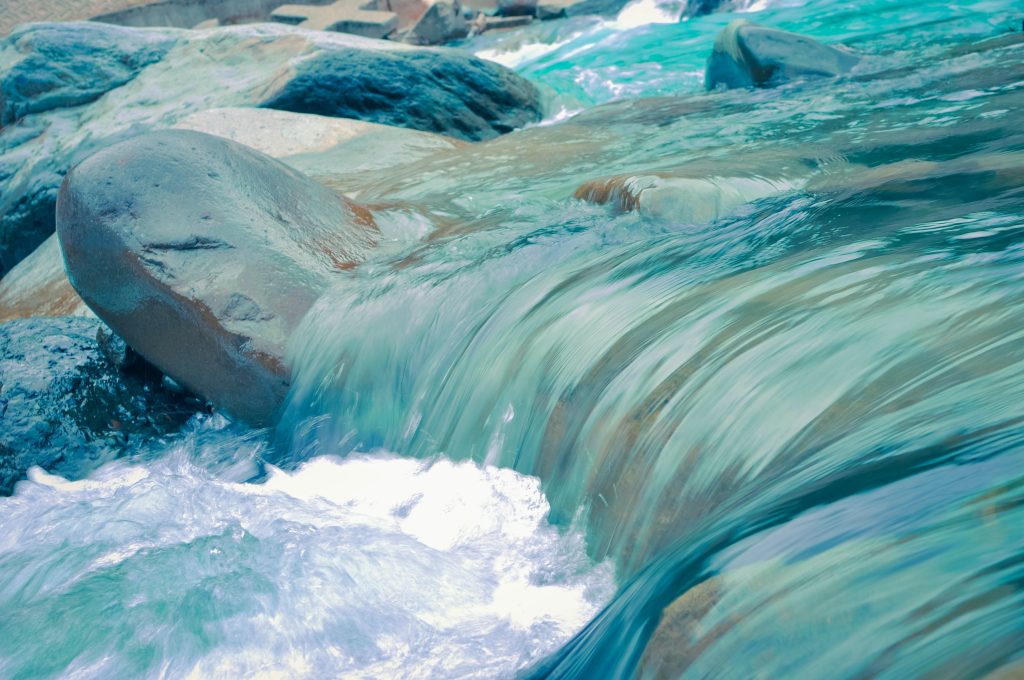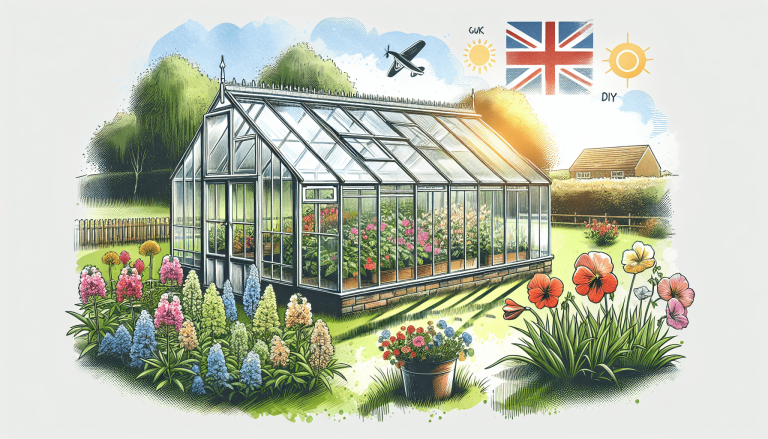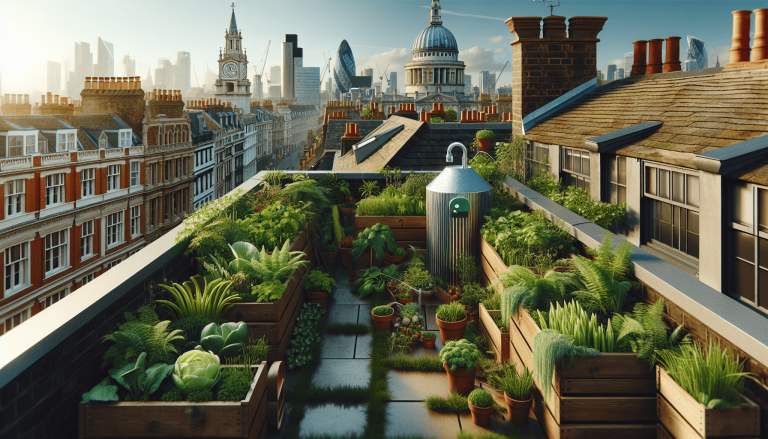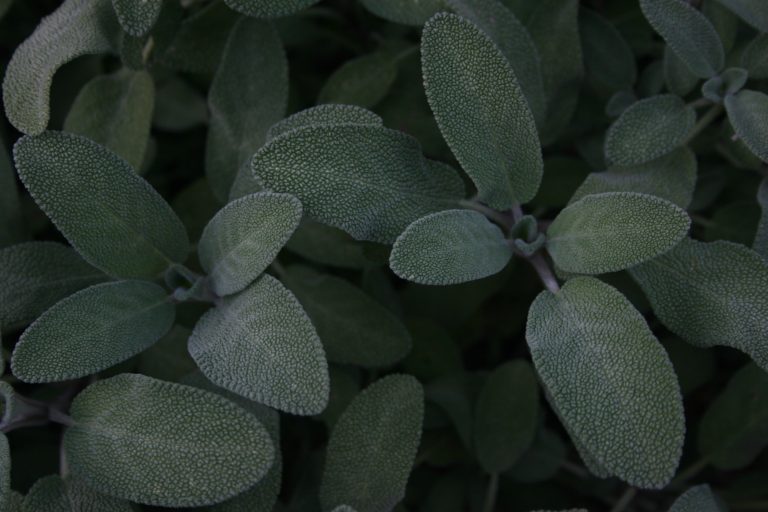Looking for simple yet effective ways to conserve water in your UK garden? Look no further! We’ve got you covered with some handy tips that will not only help you save water but also ensure your garden remains healthy and beautiful. Whether it’s choosing the right plants, optimizing irrigation systems, or collecting rainwater, there are plenty of strategies you can implement to make a positive impact on your garden’s water consumption. So, let’s dive right into these water-saving tips and transform your garden into an eco-friendly oasis.
Table of Contents
ToggleCollecting and Storing Rainwater
Installing a Water Butt
Installing a water butt is a simple yet effective way to collect rainwater and reduce your reliance on mains water for gardening purposes. A water butt is essentially a large container that is placed below a downpipe to catch rainwater as it flows from the roof. The collected rainwater can then be used to water plants, wash tools, or even fill up a pond.
To install a water butt, choose a suitable location near a downpipe and ensure it is positioned on a stable and level surface. Remove a section of the downpipe and attach an appropriate connector to divert the rainwater into the water butt. Make sure the lid of the water butt is secure to prevent any debris or insects from entering. This simple addition to your garden can save a significant amount of water throughout the year.
Using a Rain Barrel
Similar to a water butt, a rain barrel is another effective way to collect rainwater for garden use. Rain barrels are typically larger in size and have a higher storage capacity than water butts. They are designed with a spigot or tap at the bottom for easy access to the stored water.
To use a rain barrel, position it near a downpipe and connect it to the gutter system using a suitable diverter. The rain barrel should be elevated on a platform or cinder blocks to allow for better water flow when using the tap. Regularly check the rain barrel for any debris or blockages and clean it if necessary. It’s a convenient and eco-friendly solution to make the most of the rainwater that falls on your property.
Using a Rainwater Harvesting System
For those looking to take their rainwater collection to the next level, a rainwater harvesting system offers a more comprehensive solution. A rainwater harvesting system involves collecting rainwater from various surfaces, such as roofs, driveways, and even garden beds, and storing it in underground tanks or large above-ground containers.
These systems typically require professional installation due to their complexity. They consist of gutters, pipes, filters, and pumps to efficiently collect and distribute rainwater throughout the garden. Some systems even include automated controls and filters to ensure the water is suitable for various uses, including irrigation and household tasks. While they may require a larger investment upfront, rainwater harvesting systems offer a sustainable water source for long-term use.
Choosing Water-Efficient Plants
Opting for Native Plants
One of the best ways to conserve water in your garden is to choose plants that are native to your area. Native plants are well-adapted to the local climate and require less water compared to exotic or non-native species. They have evolved to survive in the natural conditions of their native habitat, making them more resilient and water-efficient.
When designing your garden, consider incorporating native plants that are suitable for your region and soil type. Native grasses, wildflowers, and shrubs are excellent choices as they can thrive on natural rainfall and typically have low water requirements. Additionally, native plants provide important habitats for local wildlife and contribute to the overall biodiversity of your garden.
Selecting Drought-Tolerant Plants
In areas with frequent water scarcity or dry spells, selecting drought-tolerant plants is essential for maintaining a thriving garden. These plants have evolved mechanisms to survive in arid conditions, such as deep root systems, waxy leaves, or succulent foliage that can store water.
There is a wide variety of drought-tolerant plants available, including ornamental grasses, cacti, lavender, and yucca. These plants can add beauty and diversity to your garden while requiring minimal watering. When choosing drought-tolerant plants, consider their specific water needs, sun exposure requirements, and maintenance requirements to ensure they are well-suited to your garden conditions.
Using Plants with Low Water Requirements
To further reduce your water consumption, consider incorporating plants with low water requirements into your garden. These plants are adapted to thrive in areas with limited water availability and are excellent options for water-conscious gardeners.
Plants with low water requirements often have characteristics such as smaller leaves, thick foliage, or a deep root system that allows them to conserve moisture. Some popular choices include sedums, agaves, and certain varieties of herbs. By strategically placing these low-water plants in your garden and grouping them according to their watering needs, you can create a visually appealing and sustainable landscape.
Improving Soil Moisture Retention
Adding Organic Matter to Soil
Improving the moisture retention of your garden soil is key to reducing water usage and ensuring healthy plant growth. One effective way to achieve this is by adding organic matter, such as compost, to your soil. Organic matter helps increase soil structure, allowing it to retain moisture for longer periods.
To add organic matter, incorporate well-rotted compost, leaf mold, or other organic materials into your soil before planting. Spread a layer of compost around existing plants, taking care not to cover the stems or crowns. This will help enrich the soil, improve its water-holding capacity, and provide essential nutrients to support plant growth.
Mulching Garden Beds
Mulching is another valuable technique for retaining soil moisture and reducing water evaporation. Applying a layer of organic mulch, such as wood chips, straw, or bark, around plants helps insulate the soil, prevent weed growth, and retain moisture.
To mulch your garden beds, first remove any existing weeds or vegetation. Apply a layer of mulch around the base of plants, ensuring it is evenly spread and does not touch the stems or trunks. Mulch should be around 2-4 inches thick to provide adequate insulation and moisture retention. Regularly top up the mulch as needed to maintain its effectiveness throughout the growing season.
Using Water Retention Products
In addition to organic matter and mulch, there are various water retention products available on the market that can help improve the moisture-holding capacity of your soil. These products, such as hydrogels or water-absorbing crystals, absorb and store water, releasing it gradually to the plant roots.
When using water retention products, follow the manufacturer’s instructions for the appropriate application rates and methods. Typically, the products are mixed into the soil or added to planting holes before placing the plants. These products can be particularly beneficial for container gardening or areas with sandy or fast-draining soil, as they can significantly reduce the need for frequent watering.
Conserving Water During Irrigation
Watering Plants Deeply and Infrequently
When it comes to watering your plants, it’s important to provide sufficient moisture without wasting water through runoff or shallow watering. To achieve this, water the plants deeply and infrequently, allowing the water to penetrate the soil and reach the roots.
Rather than lightly sprinkling the plants every day, give them a deep soaking once or twice a week. This encourages the plants to develop deep, robust root systems that can access moisture from lower soil layers. Pay attention to each plant’s specific watering requirements, as different species may have different needs. Adjust your watering schedule accordingly, taking into account factors such as rainfall, temperature, and plant growth stage.
Using Drip Irrigation Systems
Drip irrigation systems are an efficient and targeted method of delivering water directly to the plant roots. These systems consist of flexible tubes or pipes with emitters, which release water slowly and evenly along the length of the tubing. Drip irrigation helps minimize water evaporation and reduces the risk of over- or under-watering.
To set up a drip irrigation system, first, plan the layout and determine the number of emitters needed for each plant or garden bed. Connect the tubing to a water source, such as a tap or rainwater tank, and install emitters at appropriate intervals. Ensure the system is properly adjusted to deliver the desired amount of water and periodically check for any leaks or blockages.
Avoiding Overhead Sprinklers
While sprinklers may seem like a convenient way to water your garden, they are often inefficient and can lead to water wastage through evaporation and runoff. Overhead sprinklers can also promote the spread of diseases by wetting the foliage, especially during humid weather conditions.
Whenever possible, opt for more water-efficient methods of irrigation, such as drip irrigation or soaker hoses. These alternatives deliver water directly to the plant roots, minimizing water loss through evaporation and ensuring efficient water utilization.
Implementing Smart Watering Techniques
Watering Early in the Morning or Late in the Evening
Timing your watering sessions can significantly impact water efficiency and the overall health of your plants. Watering early in the morning or late in the evening when temperatures are cooler and wind speeds are lower can help minimize water loss through evaporation.
By watering during these times, you allow the plants to absorb and utilize the moisture before the heat of the day accelerates evaporation. Additionally, watering in the morning or evening reduces the risk of fungal diseases caused by prolonged leaf wetness. Set a timer or use automated irrigation systems to ensure consistent watering routines, even if you’re unable to manually water at optimal times.
Adjusting Watering Schedules Based on Weather Conditions
Flexibility in your watering schedule is key to adapting to changing weather conditions and conserving water. During periods of rainfall, adjust your watering frequency or temporarily pause irrigation to take advantage of natural precipitation.
Likewise, during hot and dry spells, increase the frequency and duration of watering to meet the plants’ needs. Pay attention to weather forecasts and monitor the soil moisture levels regularly. This will allow you to make informed decisions about watering and avoid both underwatering and overwatering, optimizing water usage and promoting healthy plant growth.
Using Moisture Sensors or Rain Sensors
Incorporating technology into your watering routine can help ensure precise and efficient water utilization. Moisture sensors or rain sensors are devices that measure the soil moisture levels or detect rainfall, triggering irrigation systems to operate only when necessary.
Moisture sensors are placed in the soil and connected to an irrigation controller. They measure the soil moisture content and provide feedback to the controller, which then determines when and how much water to deliver. Rain sensors, on the other hand, detect rainfall and temporarily interrupt the irrigation system, preventing unnecessary watering during wet periods.
By using these smart watering technologies, you can eliminate guesswork and optimize water usage based on real-time data, ultimately reducing water waste and promoting sustainable gardening practices.
Reducing Water Loss and Evaporation
Minimizing Lawn Areas
Lawns are often the most water-intensive feature of a garden, requiring regular watering to maintain a lush and green appearance. To conserve water, consider minimizing the size of your lawn area or replacing it with alternative ground covers or hardscape features.
Design your garden with a focus on functional and low-maintenance areas, such as flower beds, seating areas, or vegetable patches. By reducing the amount of lawn space, you can effectively reduce water consumption and create a more sustainable and diverse landscape.
Limiting Water Usage for Lawns
If you choose to have a lawn in your garden, there are several strategies you can implement to limit water usage and promote water conservation. One approach is to raise the cutting height of your lawn mower, as longer grass blades provide shade and reduce water evaporation from the soil surface.
Additionally, watering lawns deeply but infrequently will encourage deeper root growth and make the grass more resilient during dry periods. Consider using a rain gauge or moisture meter to determine when your lawn needs watering, ensuring you provide just the right amount of water without excess.
Covering Pools and Ponds
If your garden includes a swimming pool or a decorative pond, covering it when not in use can significantly reduce water loss through evaporation. Pool covers prevent water from evaporating and also act as a barrier to debris, reducing the need for frequent cleaning and refilling.
For ponds, consider using floating covers or water lilies to provide shade and reduce evaporation. These simple measures can help retain water in your garden features and conserve this precious resource throughout the year.
Using Water-Efficient Gardening Practices
Practicing Proper Plant Spacing
Correct plant spacing is crucial for healthy plant growth and water efficiency. Overcrowded plants compete for resources, including water, sunlight, and nutrients, resulting in poorer overall performance and increased water requirements.
Research the specific spacing requirements of your chosen plants and ensure they have enough room to grow and access the necessary resources. Proper plant spacing allows for adequate air circulation, reduces the risk of disease, and promotes efficient water utilization.
Avoiding Overwatering
Overwatering is a common mistake that can lead to water wastage, nutrient leaching, and plant health problems. Instead of relying on a predetermined watering schedule, pay attention to your plants’ needs and only water when necessary.
To determine when to water, regularly check the soil moisture levels by inserting your finger or a soil moisture meter into the soil. Water only when the top inch or so of the soil feels dry. This practice encourages root growth and helps establish more resilient plants that can withstand dry periods.
Regularly Inspecting for Leaks
Leaks in your irrigation system or outdoor faucets can lead to significant water losses without you even realizing it. Periodically inspect your garden for any signs of leaks, such as puddles or damp spots in unexpected areas, unusually high water bills, or dripping faucets.
Repair any leaks promptly to prevent further water waste. Tighten fittings, replace worn-out washers, or consult a professional if needed. Regular inspections and maintenance of your watering equipment will help ensure a water-efficient garden and prevent unnecessary water loss.
Reusing Graywater for Irrigation
Collecting and Using Household Graywater
Graywater refers to gently used water from household activities, such as showers, baths, and laundry. Instead of letting this water go to waste, it can be reused for garden irrigation, reducing the demand for freshwater resources.
To collect and use graywater, install a separate plumbing system or use portable containers to capture the water directly from the source. Use eco-friendly detergents and soaps to minimize the impact on plant health. Ideally, graywater should be used immediately to avoid any potential bacterial growth or odors.
Using Untreated Graywater on Suitable Plants
When using graywater for irrigation, it’s important to consider the specific plants that can tolerate this type of water. Graywater contains traces of soap, detergent, and other household chemicals, which may affect certain plant species.
To ensure the optimal use of graywater, choose plants that are known to tolerate low-quality water and are not sensitive to chemicals. Avoid using graywater on edible crops, root vegetables, or plants that are highly sensitive to salts or pH fluctuations. Direct the graywater to ornamental plants, flower beds, or non-edible fruit trees to minimize any potential risks.
Ensuring Graywater is Used Responsibly
While reusing graywater is a sustainable practice, it’s essential to use it responsibly and within legal guidelines. Different regions may have specific regulations regarding graywater usage, so research and adhere to the local requirements.
Ensure that graywater is used correctly and does not pose any health risks or contamination to the environment. Avoid over-irrigating with graywater, as it can lead to soil saturation and negatively impact plant health. Regularly monitor the condition of your plants and soil when using graywater to ensure they remain healthy and flourish.
Selecting Suitable Garden Design Features
Creating Water-Wise Landscape Designs
Designing your garden with water efficiency in mind can greatly reduce your water consumption and foster a sustainable outdoor space. Consider incorporating elements such as drought-tolerant plants, permeable paving, and water features with recirculating pumps into your landscape design.
Plan your garden layout to group plants with similar water requirements together. Incorporate hard landscaping features, such as patios or pathways, using permeable materials that allow water to penetrate the soil rather than runoff. Incorporate water features, such as fountains or ponds, that utilize recirculating pumps to minimize water loss.
A well-designed garden can serve as a showcase for water-efficient practices and inspire others to adopt sustainable gardening principles.
Installing Permeable Paving
Permeable paving is an eco-friendly alternative to traditional impermeable surfaces, such as concrete or asphalt. It allows rainwater to infiltrate the soil, reducing surface runoff and promoting groundwater recharge.
When installing pathways, driveways, or patio areas, consider using permeable materials such as gravel, permeable concrete, or permeable pavers. These materials allow water to percolate through the gaps or pores, preventing stagnant puddles and promoting efficient water management in your garden.
Using Water Features with Recirculating Pumps
Water features can add beauty and tranquility to your garden, but they can also be a source of water loss if not designed and operated wisely. Traditional fountains or ponds with continuously flowing water require a constant water supply, leading to unnecessary consumption.
Instead, opt for water features with recirculating pumps that reuse the same water. These pumps circulate the water, ensuring it remains clean and oxygenated without the need for constant refilling. With recirculating water features, you can enjoy the beauty and soothing sounds of water while conserving this precious resource.
Educating and Raising Awareness
Promoting Water-Saving Tips
One of the most impactful ways to conserve water in gardens is to educate and raise awareness within your community. Share water-saving tips and best practices with friends, neighbors, and fellow gardeners to inspire change.
Use various platforms, such as social media, community newsletters, or local gardening clubs, to disseminate information on water-efficient gardening techniques. Highlight the benefits, both environmental and economic, of conserving water in gardens and encourage others to adopt water-saving practices.
Organizing Community Workshops
Organizing workshops or gardening events focused on water conservation can be a powerful way to engage and educate your community. Collaborate with local organizations, gardening experts, or environmental groups to host informative sessions or hands-on activities.
Workshops can cover topics such as rainwater harvesting, selecting water-wise plants, or efficient irrigation methods. Provide practical demonstrations, distribute educational materials, and encourage participants to ask questions and share their experiences. By fostering a sense of community and learning, you can inspire others to take an active role in safeguarding one of our most precious resources.
Encouraging Eco-Friendly Gardening Practices
In addition to water-saving tips, emphasize the importance of eco-friendly gardening practices that promote sustainability and the overall well-being of our environment. Encourage composting, organic gardening techniques, and the use of native or pollinator-friendly plants.
Promote the concept of gardening in harmony with nature, reducing the use of synthetic chemicals, and creating habitats for wildlife. By adopting these practices, we can cultivate gardens that not only conserve water but also contribute to the conservation of biodiversity and the long-term health of our planet.
In conclusion, conserving water in UK gardens is essential for sustainable and responsible gardening. By implementing water-saving techniques such as collecting and storing rainwater, choosing water-efficient plants, improving soil moisture retention, and using smart watering practices, we can reduce our water consumption and preserve this invaluable resource. Through education, awareness, and the promotion of eco-friendly gardening practices, we can collectively make a significant impact in protecting water supplies and creating a greener and more resilient future.









